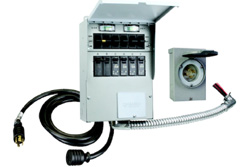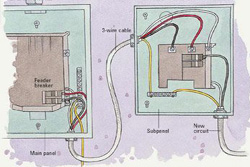How it Works
 Can I just plug a generator into an outlet?
Can I just plug a generator into an outlet?NO, Absolutely NOT. You need an automatic transfer switch to run a standby generator. A manual transfer switch that you use for your portable generator will not work, and that's probably what the most people have in mind.
During a blackout, an automatic transfer switch will automatically command your generator to start and backup your house, as if nothing happened. Below, we'll review the basics of automatic transfer switches so you can enjoy simple, on-demand backup power.
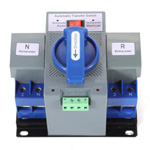 How Does an Automatic Transfer Switch Work?
How Does an Automatic Transfer Switch Work?Installing an automatic transfer switchAn automatic transfer switch, or ATS switch, connects your standby generator to your home. Normally, electricity flows from the utility to your home's main electrical panel, where it powers all your circuits.
Automatic transfer switches act as the "brain" of your entire electrical system. Once installed, they can automatically switch between electricity coming from your utility and generator power.
When the transfer switch detects a power outage, it switches your home to generator power. Afterward, it detects when the power is restored and switches your home back to utility power.
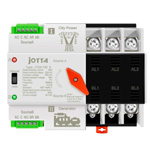 What Kind of Automatic Transfer Switch Do I Need?
What Kind of Automatic Transfer Switch Do I Need?There are different types of automatic transfer switches ranging from 50-400 amps that vary based on what you need to power.
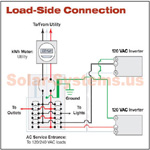 Power the Basics
Power the BasicsLoad center switchLoad center transfer switches, also known as essential circuit switches, are great if you want to power only your home's basic appliances. They are capable of energizing 8-16 critical circuits from your main breaker panel.
These switches require your electrician to wire the individual circuits from your panel, so labor costs are higher than with other options. However, you won't be powering items you don't need, and it's the perfect option if you have an older home with 100-amp service or lower.
Keep in mind, you won't be able to power appliances connected to a circuit that's not backed up, so you will have to decide what's most important at the time of installation.
The simplest option, instead of choosing individual circuits, is a service disconnect transfer switch, which powers your entire breaker panel for true whole-house backup. It is installed between your electric meter and breaker panel and is perfect if the 16-circuit load center limit isn't enough.
Although they cost more upfront, there is no wiring of single circuits with service disconnect switches, so installation is far less labor-intensive than with other options. Go with a service disconnect switch for easy, worry-free power that will make you forget you were ever on utility service.
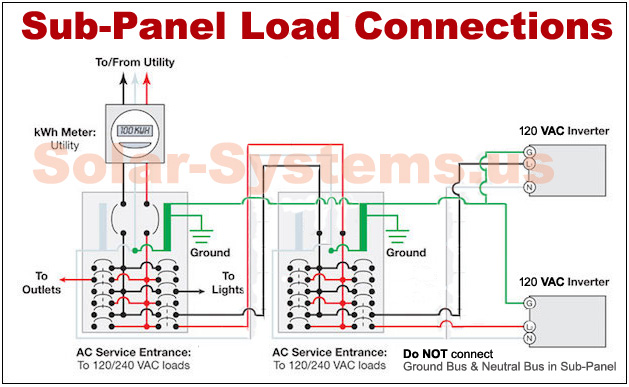
Standard automatic transfer switches are designed to power subpanels. They are not very common and may not even meet codes in all areas. If you are one of the few with a subpanel who could benefit from a standard transfer switch, be sure to discuss it with your electrician first.
Yes, the are VERY different. the MAIN thing to remember is the Tandem Breaker only connects to a Single Pole but splits the space of of a regular size Single Pole breaker to allow another circuit. There are designated slots they will fit into (usually the last 4-5 at the bottom). Since they share the same conection on the Bus, they cannot be used for a 220V connection. as you will only get twice the amp capacity if 110V. 220V MUST be on 2 Full-Size Breakers side by side and usually connected.
If you are trying to connect a Sub-Panel to your Main Panel this is imperative you understand the difference between 2 Pole 220V Breakers and Single Pole Tandem Breakers or you will be trying to run 220 Volts through your 110 Volt breakers and burn wires at the very least.

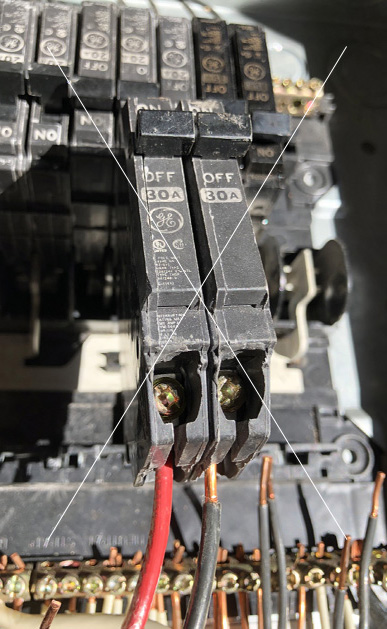
These 2 images above show what CANNOT be done and Why.
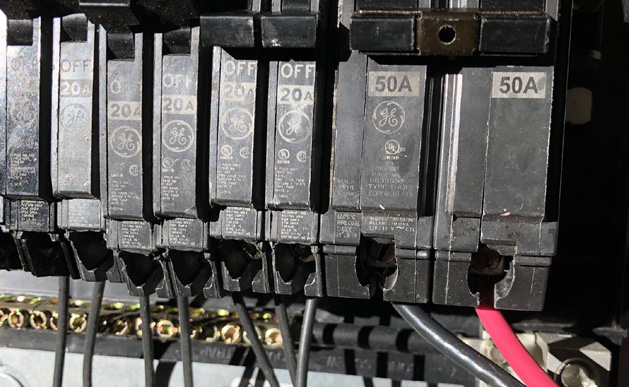
This is the Proper wiring for 220V
In some instances, you will need to power two main breaker panels. For example, suppose you have 400-amp service with two 200-amp breaker panels. You will need to use two 200-amp service disconnect switches. Both will be installed between the electric meter and their respective breaker panel.
For service disconnect switches, the amperage must match that of the main breaker in your electrical panel, (it's usually located at the very top of the box.) So, if you have a 200-amp main breaker, you'll need a 200 amp automatic transfer switch.
Load center transfer switches don't have to be sized for your entire panel because they only power certain circuits. Instead, the required amperage will vary depending on how much you want to power.
In the past, home standby generators could not power several high-load appliances, like two central air conditioners at once, because the electrical demand was too high and caused an overload.
Today that is not a problem because most automatic transfer switches come with power management capability.
- A/C shedding, like its name implies, turns off or "sheds" your air conditioner load if the transfer system detects the generator can't keep up with demand.
- Power management modules can manage and prioritize multiple electric loads, turning them off and on depending on available generator power.
An automatic transfer switch is essential if you're buying a home standby generator. To install your generator, you need to buy both at the same time.
In many cases, transfer switches come packaged with select standby generators, but not always. Ultimately, you need to make sure your switch is large enough to meet your power needs. That's why we're here.
